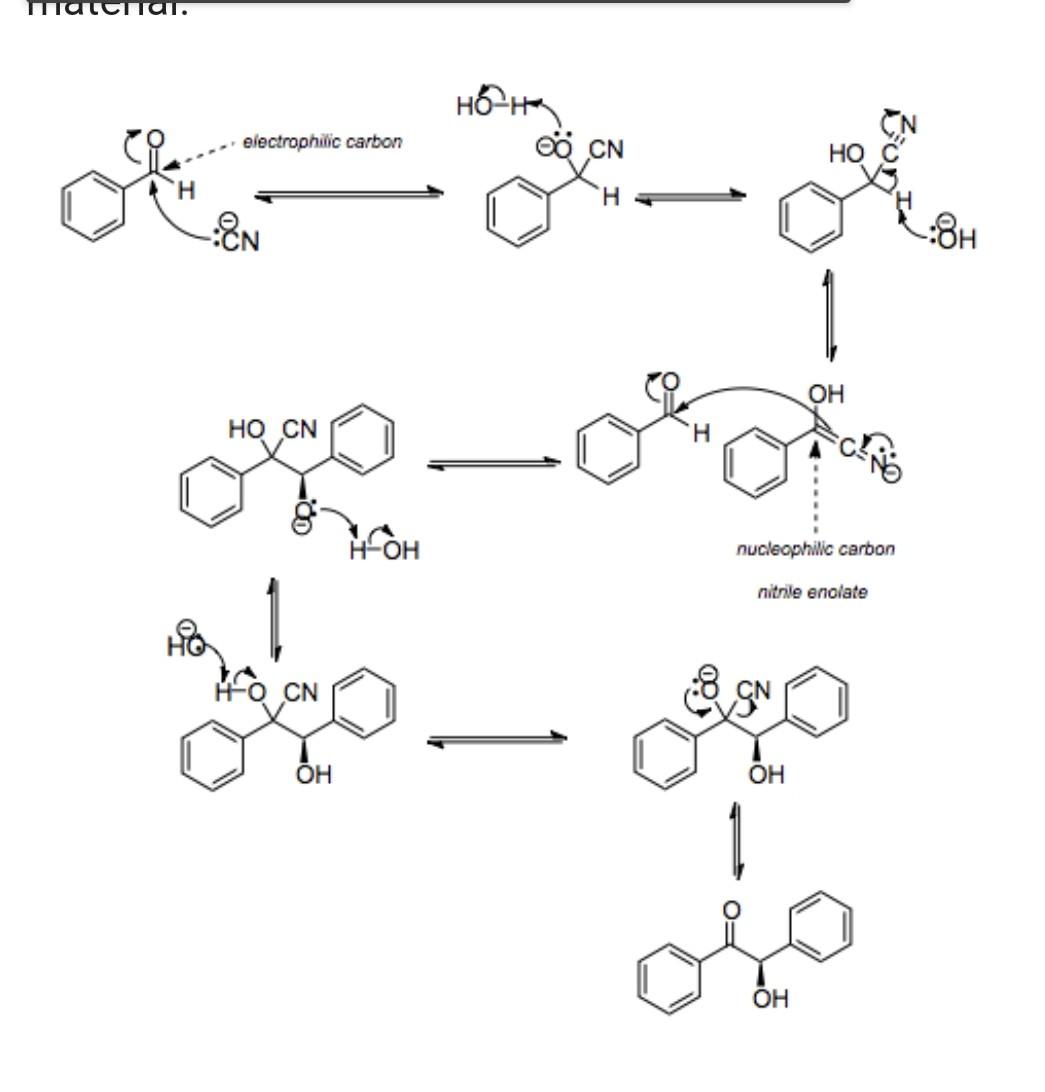Time management is very much important in IIT JAM. The eduncle test series for IIT JAM Mathematical Statistics helped me a lot in this portion. I am very thankful to the test series I bought from eduncle.
Nilanjan Bhowmick AIR 3, CSIR NET (Earth Science)Shweta Thakur posted an Question
- IIT JAM
- Chemistry (CY)
Why this encircled compound is unstable f alcolhoiic potassium cyanide, they
2. Benzoin condensation. Aromatic aldehydes which do not contain o-hydrogen atoms aldol condensation. However, in presence of alcolhoiic potassium cyanide, they undergo seleOt une not under ondensatig the produg obtained from benzaldehyde) and the reaction is called benzoin condensation. For examnle Alc. KCN Het OH in a difer manner to form o-hydroxy ketones commonly called benzoins (after the name le, O O -Č-H Heat Benzoin Benzaldehyde 1de ig Mechanism. Kinetics of the reaction shows that benzoin condensation is first order in. and second order in benzaldehyde, i.e. Rate o [CN] ICH,CHO]2 steps benzaldehıyde to fon Step 1. The cyanide ion being a strong nuclcophile adds to the C= O group of benzaldehvde a anion () which being unstable undergoes a proton transfer to form carbanion (I). In vicw of the above rate law, benzoin condensation is believed to occur by the following sten OH OH :0: CH-C CH-C CN CH-CH CH-C CN CN C-N H Benzaldehyde () (11) The driving force for this proton transfer is the resonance stabilization of the resulting anion (). Step 2. The carbanion (I) subsequently adds to the C= O group of another benzaldehyde molecule the addition product (1I). This addition product then undergoes another proton transfer to affor IV) which subsequently eliminates cyanide ion to form benzoin. 0Dnogor 0242 :OH H-C. -CHs CH-C- C-CH CN H CN H (I) (III) :O5 CgHs-C-C-CH, CgH-C -C-CH-CHs :OH O OH CN H Benzoin VIng forçe for th
- 0 Likes
- 3 Comments
- 0 Shares
-
![comment-profile-img]() >
>
-
![comment-profile-img]() >
>
-
Achyut ranjan gogoi
![best-answer]()
The encircled ion undergoes change into ion II because in structure II reasonance stabilization is possible. But in Structure I which is encircled reasonace stabilization is not possible. Hence structure I is unstable as compared to structure II
Do You Want Better RANK in Your Exam?
Start Your Preparations with Eduncle’s FREE Study Material
- Updated Syllabus, Paper Pattern & Full Exam Details
- Sample Theory of Most Important Topic
- Model Test Paper with Detailed Solutions
- Last 5 Years Question Papers & Answers
Sign Up to Download FREE Study Material Worth Rs. 500/-










 >
>
 >
>









Priyanshu kumar![best-answer]()
check this mechanism shweta First formation of cyanohydrin takes place,then the OH- abstract acidic proton adjacent to electron withdrawing Cyanide group.